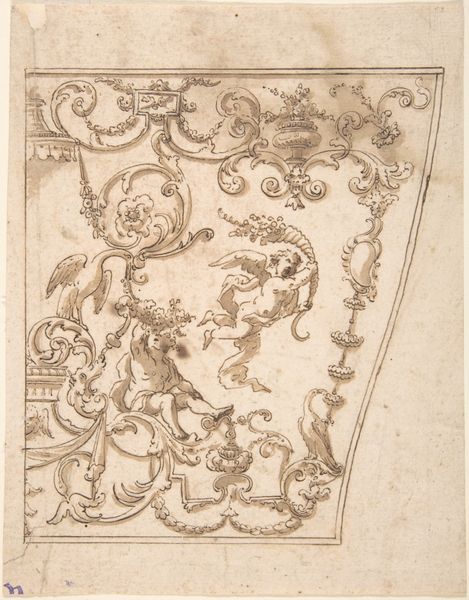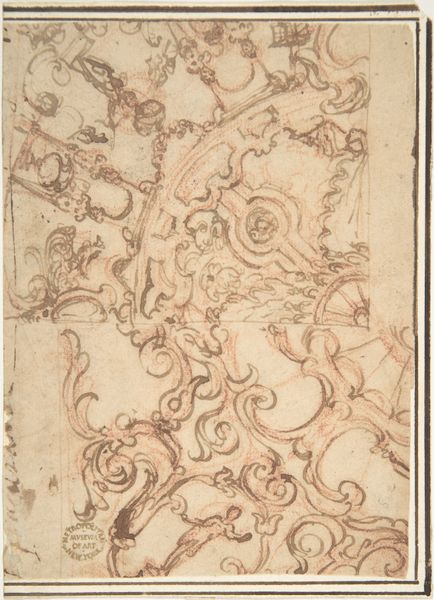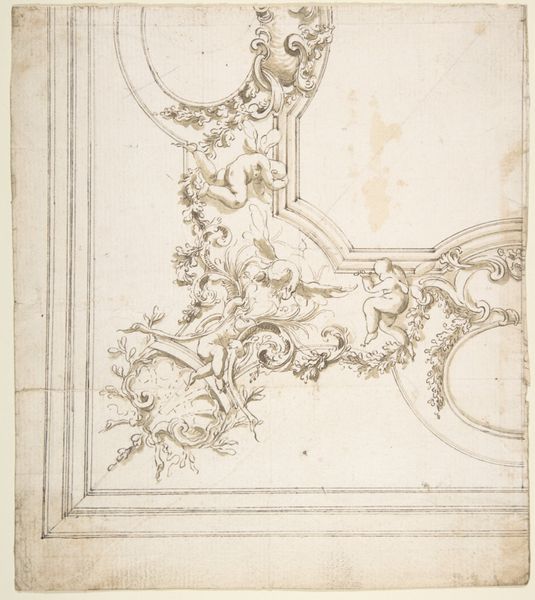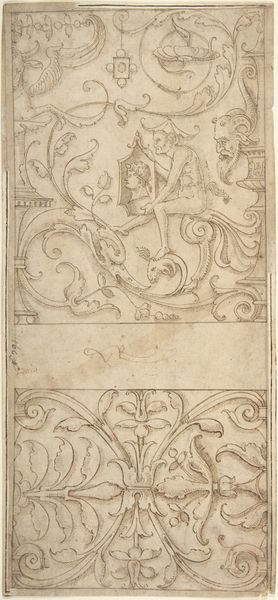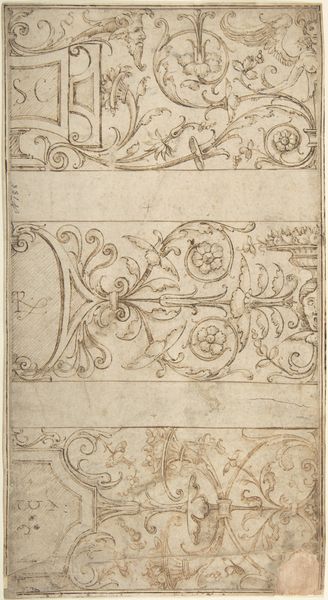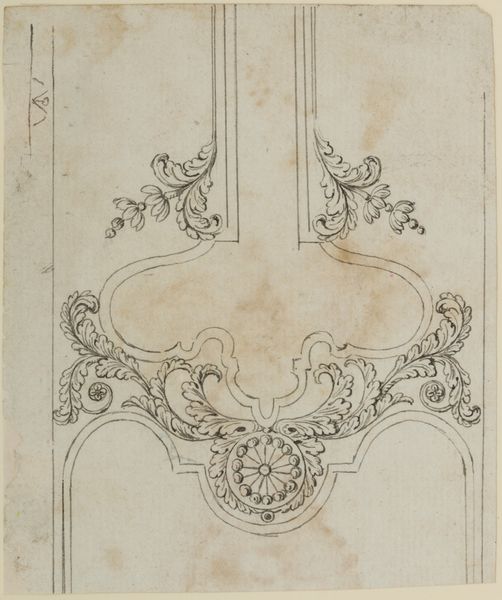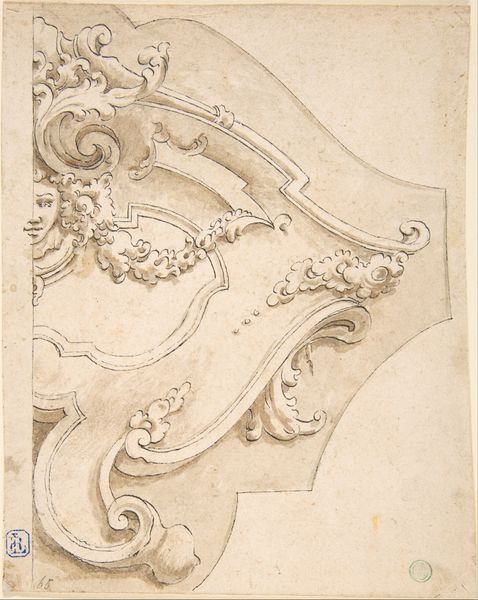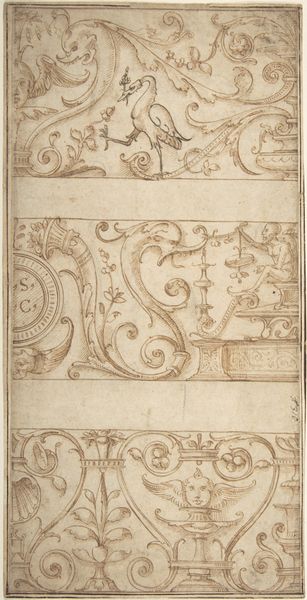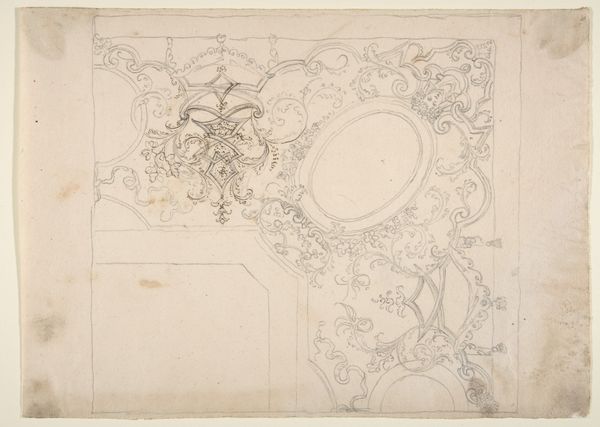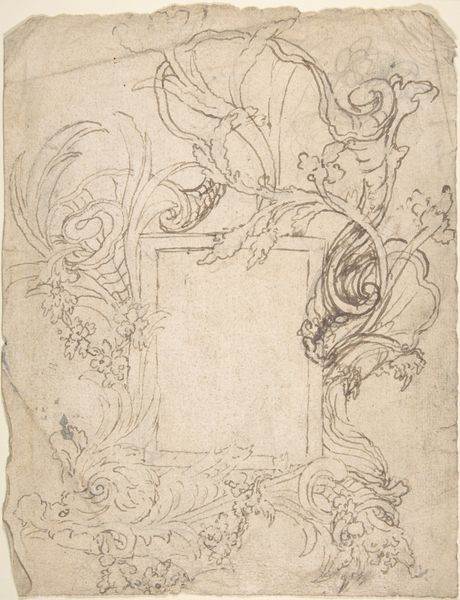
drawing, pencil
#
drawing
#
baroque
#
form
#
geometric
#
pencil
#
line
#
decorative-art
Dimensions: sheet: 11 7/16 x 8 1/8 in. (29.1 x 20.6 cm)
Copyright: Public Domain
Editor: Right, so this is Donato Giuseppe Frisoni’s "Design for a Ceiling Decoration," dating back to somewhere between 1709 and 1720. It’s a pencil drawing. The detail is amazing, but I’m struck by the contrast between the organic, flowing lines and the rigid geometry of the overall design. What's your interpretation of it? Art Historian: This piece really speaks to the performative aspect of power and authority during the Baroque era. We often forget that these designs weren't just aesthetic choices, but powerful statements reflecting social hierarchies. Who commissioned such ceilings, and what did the intended audience perceive in them? Think of the geometric rigour not just as style, but as control – an assertion of dominance rendered visible. How does this connect to contemporary dialogues around architectural spaces and their embedded power structures? Editor: So, it’s less about beauty and more about the statement it makes? But isn’t there beauty in the craft, in the swirling, plant-like elements? Art Historian: The beauty isn't incidental; it’s functional. The ornate details and the sheer skill involved in their rendering were meant to impress, to awe the viewer into accepting the patron's authority. It creates a spectacle to legitimize power through visual excess, through what some scholars have referred to as ‘conspicuous consumption’. Considering Frisoni's place in society and how patronage functioned then, would you say he had a degree of agency here? Editor: That’s… a different way to see decorative art! I guess I had a limited view before. Thanks, it’s been very insightful. Art Historian: My pleasure. Let's continue thinking about art in terms of broader power dynamics - who creates it, who consumes it, and what unspoken messages do these forms communicate?
Comments
No comments
Be the first to comment and join the conversation on the ultimate creative platform.
